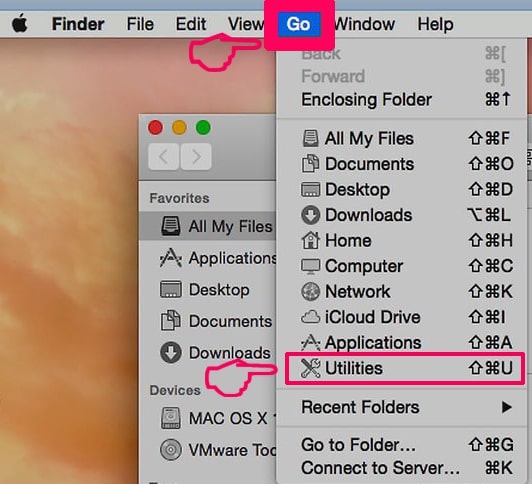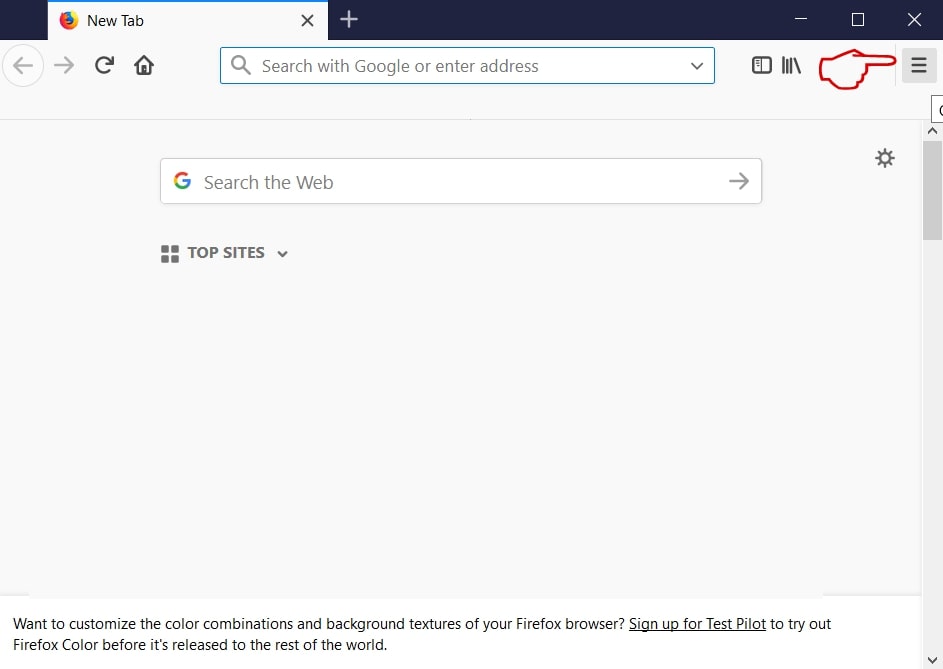What Is “Logic Pro will damage your computer”?
Many Mac users have found a pop-up message reading “Logic Pro will damage your computer. You should move it to the trash” to be intrusive and annoying. However, this notice is not likely to be associated with any form of malware. If you suspect your macOS has been compromised, an anti-malware program should be used to scan it. Additionally, other similar pop-up messages can appear on Macs.

“Logic Pro will damage your computer” Details
| Name | “Logic Pro will damage your computer” |
| Type | Adware / Potentially Unwanted Application |
| Short Description | A program that delivers lots of annoying advertisements in browsers it affects. |
| Symptoms | Browser slowdowns could occur due to increased number of ads generated by the adware. Sensitive detials could be obtained by unknown actors. |
| Distribution Method | Software bundles; Corrupted installers; Deceptive web pages |
| Detection Tool |
See If Your System Has Been Affected by malware
Combo Cleaner
Malware Removal Tool
|
How Did I Get “Logic Pro will damage your computer” Installed on My Mac?
Most of the distribution mechanisms of bundled software installers and fake software updates, which are designed to trick you into installing an unwanted program without considering the side effects, are related to Logic Pro. For the purpose of achieving this goal, these methods are used over compromised web pages.
What Does “Logic Pro will damage your computer” Do?
“Logic Pro will not damage your computer” is an adware developed with the goal of displaying a large number of online ads. When it is initiated on your Mac, it can modify the settings of some of the most commonly used browsers, such as Mozilla Firefox, Google Chrome, Internet Explorer, and Safari, so as to promote more advertisements. Unfortunately, this could have an adverse effect on the functioning of your Mac and slow it down. Additionally, the ads may take you to potentially hazardous web pages managed by cybercriminals.
Another issue that may occur while running Logic Pro on your device is data collection. Through various tracking technologies, the program could try to acquire sensitive data from your compromised browsers and send it to its servers. To stop this adware program from displaying intrusive ads and collecting your confidential data, you should delete all associated files from compromised browsers and system without delay.
Is “Logic Pro will damage your computer” a Computer Virus?
Despite not being a conventional computer virus, the statement “Logic Pro will damage your computer” can still be damaging due to its adware-like traits and potentially undesirable program activities, as well as backdoor capabilities.
Is “Logic Pro will damage your computer” Dangerous?
The LaunchAgents folder in the Library is a common target for “Logic Pro will damage your computer” malware, and can cause various issues due to its persistent nature. Removing the malware completely requires a technical approach, as its persistence agent can be difficult to eliminate.
How to Protect My Mac from “Logic Pro will damage your computer”?
To protect yourself from potentially unwanted programs (PUPs) like the one causing the “Logic Pro will damage your computer” pop-up, you should practice good online habits. Here are a few steps you can take to avoid these annoying and potentially dangerous programs:
- Don’t download programs from Internet ads, pop-ups, torrent trackers, file sharing sites and other unreliable sources.
- Opt-out of the setting hidden in the “Custom” or “Advanced” sections when you’re installing a program. You can deselect most PUPs from there.
- Avoid installing programs you don’t need.
- Keep an eye out for any excessive or unusual Internet advertising. These ads can be brought on by PUPs and adware attached to your browser.
- Read the terms and conditions of use when you install any programs.
- Check your installed software regularly and uninstall any applications you do not want or need.
- Install an anti-malware program that also has the ability to detect and remove potentially unwanted programs.
Remove “Logic Pro will damage your computer” from Your Mac
To ensure your Mac is free from the “Logic Pro will damage your computer” and all related files, please follow the steps in the removal guide carefully. Both manual and automatic removal options are outlined, and using both of these together can help protect your device from future attacks. If you have any other questions or need further help, please leave a comment below the article.
Steps to Prepare Before Removal:
Before starting to follow the steps below, be advised that you should first do the following preparations:
- Backup your files in case the worst happens.
- Make sure to have a device with these instructions on standy.
- Arm yourself with patience.
- 1. Scan for Mac Malware
- 2. Uninstall Risky Apps
- 3. Clean Your Browsers
Step 1: Scan for and remove Logic Pro files from your Mac
When you are facing problems on your Mac as a result of unwanted scripts and programs such as Logic Pro, the recommended way of eliminating the threat is by using an anti-malware program. SpyHunter for Mac offers advanced security features along with other modules that will improve your Mac’s security and protect it in the future.

Quick and Easy Mac Malware Video Removal Guide
Bonus Step: How to Make Your Mac Run Faster?
Mac machines maintain probably the fastest operating system out there. Still, Macs do become slow and sluggish sometimes. The video guide below examines all of the possible problems that may lead to your Mac being slower than usual as well as all of the steps that can help you to speed up your Mac.
Step 2: Uninstall Logic Pro and remove related files and objects
1. Hit the ⇧+⌘+U keys to open Utilities. Another way is to click on “Go” and then click “Utilities”, like the image below shows:

2. Find Activity Monitor and double-click it:

3. In the Activity Monitor look for any suspicious processes, belonging or related to Logic Pro:


4. Click on the "Go" button again, but this time select Applications. Another way is with the ⇧+⌘+A buttons.
5. In the Applications menu, look for any suspicious app or an app with a name, similar or identical to Logic Pro. If you find it, right-click on the app and select “Move to Trash”.

6. Select Accounts, after which click on the Login Items preference. Your Mac will then show you a list of items that start automatically when you log in. Look for any suspicious apps identical or similar to Logic Pro. Check the app you want to stop from running automatically and then select on the Minus (“-“) icon to hide it.
7. Remove any leftover files that might be related to this threat manually by following the sub-steps below:
- Go to Finder.
- In the search bar type the name of the app that you want to remove.
- Above the search bar change the two drop down menus to “System Files” and “Are Included” so that you can see all of the files associated with the application you want to remove. Bear in mind that some of the files may not be related to the app so be very careful which files you delete.
- If all of the files are related, hold the ⌘+A buttons to select them and then drive them to “Trash”.
In case you cannot remove Logic Pro via Step 1 above:
In case you cannot find the virus files and objects in your Applications or other places we have shown above, you can manually look for them in the Libraries of your Mac. But before doing this, please read the disclaimer below:
1. Click on "Go" and Then "Go to Folder" as shown underneath:

2. Type in "/Library/LauchAgents/" and click Ok:

3. Delete all of the virus files that have similar or the same name as Logic Pro. If you believe there is no such file, do not delete anything.

You can repeat the same procedure with the following other Library directories:
→ ~/Library/LaunchAgents
/Library/LaunchDaemons
Tip: ~ is there on purpose, because it leads to more LaunchAgents.
Step 3: Remove Logic Pro – related extensions from Safari / Chrome / Firefox









Logic Pro-FAQ
What is Logic Pro on your Mac?
The Logic Pro threat is probably a potentially unwanted app. There is also a chance it could be related to Mac malware. If so, such apps tend to slow your Mac down significantly and display advertisements. They could also use cookies and other trackers to obtain browsing information from the installed web browsers on your Mac.
Can Macs Get Viruses?
Yes. As much as any other device, Apple computers do get malware. Apple devices may not be a frequent target by malware authors, but rest assured that almost all of the Apple devices can become infected with a threat.
What Types of Mac Threats Are There?
According to most malware researchers and cyber-security experts, the types of threats that can currently infect your Mac can be rogue antivirus programs, adware or hijackers (PUPs), Trojan horses, ransomware and crypto-miner malware.
What To Do If I Have a Mac Virus, Like Logic Pro?
Do not panic! You can easily get rid of most Mac threats by firstly isolating them and then removing them. One recommended way to do that is by using a reputable malware removal software that can take care of the removal automatically for you.
There are many Mac anti-malware apps out there that you can choose from. SpyHunter for Mac is one of the reccomended Mac anti-malware apps, that can scan for free and detect any viruses. This saves time for manual removal that you would otherwise have to do.
How to Secure My Data from Logic Pro?
With few simple actions. First and foremost, it is imperative that you follow these steps:
Step 1: Find a safe computer and connect it to another network, not the one that your Mac was infected in.
Step 2: Change all of your passwords, starting from your e-mail passwords.
Step 3: Enable two-factor authentication for protection of your important accounts.
Step 4: Call your bank to change your credit card details (secret code, etc.) if you have saved your credit card for online shopping or have done online activiites with your card.
Step 5: Make sure to call your ISP (Internet provider or carrier) and ask them to change your IP address.
Step 6: Change your Wi-Fi password.
Step 7: (Optional): Make sure to scan all of the devices connected to your network for viruses and repeat these steps for them if they are affected.
Step 8: Install anti-malware software with real-time protection on every device you have.
Step 9: Try not to download software from sites you know nothing about and stay away from low-reputation websites in general.
If you follow these reccomendations, your network and Apple devices will become significantly more safe against any threats or information invasive software and be virus free and protected in the future too.
More tips you can find on our MacOS Virus section, where you can also ask any questions and comment about your Mac problems.
About the Logic Pro Research
The content we publish on SensorsTechForum.com, this Logic Pro how-to removal guide included, is the outcome of extensive research, hard work and our team’s devotion to help you remove the specific macOS issue.
How did we conduct the research on Logic Pro?
Please note that our research is based on an independent investigation. We are in contact with independent security researchers, thanks to which we receive daily updates on the latest malware definitions, including the various types of Mac threats, especially adware and potentially unwanted apps (PUAs).
Furthermore, the research behind the Logic Pro threat is backed with VirusTotal.
To better understand the threat posed by Mac malware, please refer to the following articles which provide knowledgeable details.


